#infanta maria ana of portugal
Explore tagged Tumblr posts
Text

#1850s#victorian#colorization#colorized#colorized photo#Infanta Maria Ana of Portugal#Infanta Antonia of Portugal#Pedro V of Portugal#Luis I of Portugal#Infante João#Infante Fernando of Portugal
4 notes
·
View notes
Text

Nicolas de Largillière (French, 1656-1746) Infanta María Ana Victoria de Borbón, Spanish Infanta, Queen Consort of Portugal and the Algarves, (1718-1781), 1724 Museo Nacional del Prado Infanta Maria Ana Victoria was Queen Consort of Portugal and the Algarves due to her marriage to Joseph I. She also acted as Queen Regent of Portugal. She has descendants ranging from the present King of Spain, Grand Duke of Luxembourg, Duke of Parma (the Parma line was founded by her second surviving brother Philip) and French Pretenders, the Count of Paris.
#Nicolas de Largillière#Nicolas de Largilliere#french art#spanish royal#spanish aristocrat#queen#princess#hispanic#latin#european art#classical art#mediterranean#european fashion#european history#southern europe#art#fine art#europe#european#oil painting#fine arts#europa#portugal#algarves#borbon#maria ana victoria de borbon
29 notes
·
View notes
Note
There's a brief mention of the tension between Pedro V's sister Maria Ana (who would marry Prince George of Saxony) and his new bride on the Wikipedia article for Infanta Maria Ana of Portugal (1843–1884). Also while her parents didn't accompany her (the family lived in Düsseldorf and she had proxy wedding in Berlin than took a steamer from Ostend to Dover to stay with the British Royals and then to Portsmouth to Lisbon), but her brother Leopold did and how he met future bride Infanta Antonia.

Here's the pic that anon linked:

Thank you for the information!
4 notes
·
View notes
Text
O Papel das Bodas
Portugal é uma República há mais de um século e pode dizer-se, sem sombra de exagero, que é um facto político consumado.
É certo que, legalmente, seria possível ao parlamento, desde que reunisse a maioria qualificada necessária para o efeito, alterar a constituição e repristinar a Monarquia. Contudo, se considerarmos que o único partido político monárquico não conseguiu eleger um único deputado, não se vislumbra como muito provável essa possibilidade.
Esta falta de apoio popular à causa monárquica também não deixa muitos receios quanto à possibilidade de um golpe de estado, que derrube a república e restaure a monarquia. Nem as forças armadas têm qualquer propensão para esse desígnio, nem se vislumbram poderes estrangeiros com vontade de apoiar pretensos candidatos à extinta coroa portuguesa.
E esse é outro problema para quem ainda assim ouse sonhar com o regresso à monarquia, não há um sucessor direto do último rei, D. Manuel II, falecido no já distante ano de 1932, sem que se lhe conheça descendência legítima ou ilegítima.
Na falta de parentela na linha reta, teríamos que recorrer à linha colateral para encontrar um sucessor. Ora D. Manuel teve dois irmãos, a infanta Maria Ana, que sobreviveu apenas três horas ao seu nascimento, em 1887, e o infante Luís Filipe, que morreu assassinado, juntamente com o seu pai, o rei D. Carlos, no Terreiro do Paço, em 1 de Fevereiro de 1908, com a idade de 21 anos de idade, solteiro e sem descendência conhecida.
Restam assim os primos afastados, mas mesmo muito afastados, e algum descendente ilegítimo. Um alegado parecer do Ministério dos Negócios Estrangeiros, datado de 2006, contrariando o definido pela Constituição Monárquica de 1838 e pela própria Constituição da República Portuguesa, considera o pretendente Duarte Pio de Bragança como o legítimo herdeiro e representante da Casa de Bragança. Porque razão o Ministério dos Negócios Estrangeiros da República Portuguesa decidiu emitiu um parecer sobre esta matéria e quais os fundamentos para a escolha deste candidato em detrimento de outros, permanece um mistério, que originou protestos de alguns monárquicos, entre eles os do então deputado monárquico e fadista, Nuno da Câmara Pereira.
Duarte Pio de Bragança é pois o atual Duque de Bragança mas é bisneto de D. Miguel. Por isso, além de ser primo num grau muito distante do último rei de Portugal, descende de alguém que, oficialmente, nunca foi rei, mas apenas regente, em representação da sua sobrinha D. Maria II. O facto de se ter declarado abusivamente rei, após a morte de D. João VI, em 1828, levou a uma guerra civil, que durou de 1832 a 1834, com a sua derrota e a sujeição à lei do banimento, decretada por D. Maria II, que o condenou ao exílio, destituíu-lhe o estatuto de realeza e os direitos de sucessão ao trono de Portugal, e a todos os seus descendentes. Esta norma seria expressamente confirmada na Constituição de 1838, na qual o artigo 98 estipulava que "A linha colateral do ex-infante Dom Miguel e todos os seus descendentes estão perpetuamente excluídos da sucessão".
É certo que a Constituição de 1838 só vigorou até 1842 e a Carta Constitucional de 1826 não continha obviamente qualquer referência ao banimento de D. Miguel, porque era anterior à morte de D. João VI. Ainda assim, esta lei promulgada por D. Maria II, manteve-se em vigor até ao fim da monarquia e mesmo na vigência da república, porque a ex-família real continuou impedida de entrar em Portugal até 1950, data em que um decreto da Assembleia Nacional revoga a lei do banimento, permitindo o regresso a Portugal quer dos descendentes de D. Miguel, quer dos outros membros da ex-família real, proscritos a 15 de Outubro de 1910, na sequência da implantação da república.
Questiona-se assim a legitimidade de D. Duarte Pio, porque se a revogação da lei do banimento pelo Estado Novo lhe permitiu o regresso a Portugal, nunca lhe restituiu (nem a ele, nem a ninguém) o estatuto de realeza e os direitos de sucessão ao trono de Portugal, até porque tal estatuto e direitos já não existiam em 1950, quarenta anos após a implantação da República, nem existem presentemente.
Assim, o que a lei de 1950 determinou, ao revogar a lei do banimento de 1834 e a lei de proscrição de 1910, foi tão somente permitir o regresso a Portugal dos membros da ex-familia real, por considerar que tal já não acarretaria riscos para a segurança da república, entretanto consolidada entre a população, pelo Estado Novo.
Nem faria sentido uma república legislar sobre as regras de sucessão da monarquia que depôs. Pelo que, no meu modesto entendimento, se regras existem sobre essa matéria, elas serão exatamente as mesmas que estavam em vigor até 5 de Outubro de 1910.
Por estas razões, alguns monárquicos opõem-se à legitimidade de Duarte Pio e apontam outros legítimos sucessores de D.Manuel II.
Uma famosa candidata foi Maria Pia de Bragança, alegada filha bastarda de D. Carlos I, legitimada por seu pai por meio de uma carta régia, datada de 14 de Março de 1907, assinada pelo próprio monarca português no Palácio das Necessidades, em Lisboa (mas fortemente contestada pelo ramo miguelista) e falecida em 1995, mas com descendência, de dois casamentos diferentes. Uma filha, Fátima Francisca, era freira e morreu sem descendência, a outra, Maria da Glória, casou com o escultor espanhol Miguel Ortiz y Berrocal, de quem teve dois filhos. A sua vocação dinástica era tal que vendeu os eventuais direitos à coroa portuguesa ao empresário italiano Rosario Poidimani.
Outra candidatura vem dos Marqueses de Loulé, descendentes de D. Ana de Jesus Maria de Bragança, filha bastarda da rainha, reconhecida por D. João VI. Mas a rainha Carlota Joaquina era famosa pelos filhos bastardos. Ana de Jesus era a terceira reconhecida por D. João VI (depois de Miguel Maria e Maria da Assunção). À terceira foi de vez e o monarca declarou que não reconhecia mais filhos bastardos da mulher. Por isso, o próprio D. Miguel teria sido um filho bastardo de D. Carlota Joaquina, o que mais ainda questiona os direitos dinásticos dos seus descendentes. Laura Permon, a duquesa de Abrantes e mulher do General Junot, declarou publicamente que: "O erário público pagava a um apontador para apontar as datas do acasalamento real, mas ele tinha pouco trabalho. Isso não impedia D. Carlota Joaquina de ter filhos com regularidade e, ao mesmo tempo advogar inocência e dizer que era fiel a D. João VI, gerando assim filhos da Imaculada Conceição." [...] "Mas uma coisa é saber-se que não era o pai, outra é dizer quem era o pai, porque D. Carlota Joaquina, não era fiel nem ao marido nem aos amantes".
É caso para questionar se os ímpetos patrióticos e liberais de D.Pedro IV, que o levaram a abdicar da coroa imperial brasileira para vir disputar a coroa portuguesa ao irmão, não teriam por base uma necessidade inconfessavel de recuperar para a casa de Bragança a coroa lusitana, retirando-a a um usurpador, filho bastardo da rainha Carlota Joaquina e sabe-se lá de quem, apesar de perfilhado por D. João VI.
A guerrilha entre o casal real era tal, que muitos apontaram um dedo incriminador a Carlota Joaquina e ao filho Miguel, implicando-os na morte prematura do rei, com o objetivo de impedir a reunificação das coroas portuguesa e brasileira num Reino Unido de Portugal, do Brasil e dos Algarves, criado por D. João VI e destinado obviamente ao primogénito D. Pedro IV e aos seus sucessores. Afastado o rei e com D. Pedro no Brasil, estava aberto o caminho para a dinastia bastarda dos Bourbon em Portugal.
Pelo que todas as pretensões à extinta coroa de Portugal são de uma fragilidade pungente.
Com todo este cenário de fundo, assistimos este fim de semana, que até coincidiu com os festejos do 5 de Outubro, a uma feira de vaidades à volta do casamento da filha de Duarte Pio, onde nem sequer faltou o Presidente da República (que nunca falta a nenhum evento, é certo, por mais insignificante que seja), ex-primeiros ministros e mesmo o atual, apesar de socialista e republicano, sentiu-se na obrigação de justificar a falta, em virtude de compromissos de Estado anteriormente assumidos.
Não há, de facto, nada como um casamento para alegrar as pessoas e para afastar querelas políticas e constitucionais.
Mesmo republicanos, os portugueses querem ter direito a uma boda real, nem que seja de pacotilha.
8 de Outubro de 2023
0 notes
Photo

Infanta Maria Ana of Portugal she married Prince George of Saxony and among her children were: Maria Josepha, who married Archduke Otto of Austria and was the mother of the last Austrian emperor, Karl I. Also Frederick Augustus, the husband of Princess Louise of Tuscany, their messy divorce was one of the big royal scandals of their time.
12 notes
·
View notes
Photo
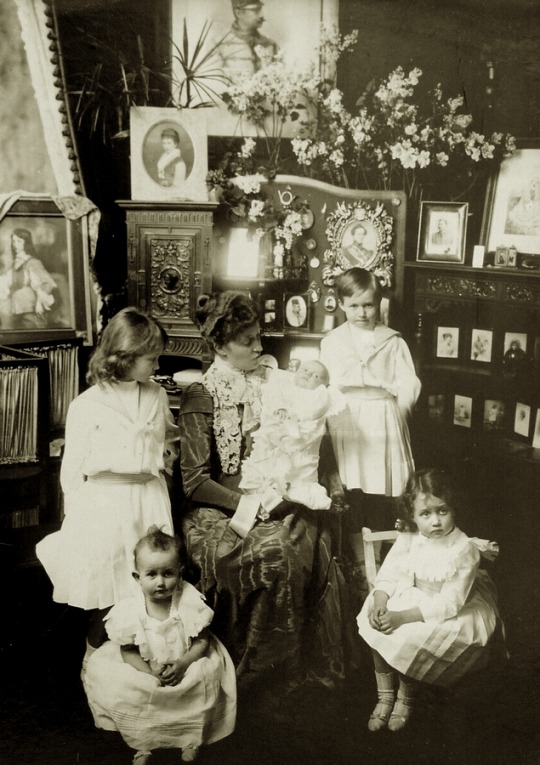
Grand duchess Maria Anna of Luxembourg , neé Infanta of Portugal, with daughters , Princess Maria Adelaide, later Grand duchess of Luxembourg (left), Antonia (later Crown princess of Bavaria), baby Elisabeth (later Princess von Thurn und Taxis), Charlotte (later Grand Duchess of Luxembourg) and sitting left, Hilda , later princess of Schwarzenberg. 1901
#Antique#vntage#Edwardian#1900s#Belle epoque#children#edwardian fashion#Edwardian children fashion#Royaty#benelux#Luxembourg#Grand duchess Maria Anna of Luxembourg#Nassau#Infanta Maria Ana of portugal#Braganza#Grand Duchess Marie Adelaide of Luxembourg#Crown princess MAria antonia of Bavaria#Princess Elisabeth von Thurn und Taxis#Grand Duchess Charlotte of Luxembourg#princess Hilda of Schwarzenberg
89 notes
·
View notes
Text
King Pedro V’s 5th sibling: Infanta Maria Ana de Portugal

Born: 21st August 1843 Necessidades Palace, Lisbon, Portugal Died: 5th February 1884 (aged 40) Dresden, Saxony
Infanta Maria Ana of Portugal (Maria Ana Fernanda Leopoldina Micaela Rafaela Gabriela Carlota Antónia Júlia Vitória Praxedes Francisca de Assis Gonzaga) (21st August 1843 – 5th February 1884) was a Portuguese infanta (princess), the eldest surviving daughter of Queen Maria II of Portugal and her King consort Fernando II of Portugal, a member of the House of Bragança.
After her mother's death in 1853, when Maria Ana was just ten years old, she became the leading lady of the court, until her older brother, King Pedro V of Portugal, married Princess Stephanie of Hohenzollern-Sigmaringen,

in 1858. Although in the early stages of their acquaintance the two sisters-in-law had a good relationship, in a letter written in 1859 to Prince Albert of Saxe-Coburg and Gotha,

when Stephanie was already dead, King Pedro mentions that his sister made unflattering comments regarding his wife "because of her feminine vanity caused by a lower status (...)"
The relationship between the sisters-in-law seems to have had its ups and downs since Stephanie's arrival in May 1858 and Maria Ana's wedding in May 1859. The Queen wrote about her sister-in-law: "She is, in every respect, the one who is more like Pedro (...)", "She is a charming person, good, generous, remarkably sensible for her age, with no trace of selfishness, respected and loved by all of us (...) George of Saxony has discovered a true gem. She is happy and loves him, but she cannot talk about the moment in which she will leave her family without crying. What is certain is that she will leave a terrible emptiness behind". Maria Ana's brother, Pedro, also claims during this time that his sister is "the pearl of our family circle", in a letter to Prince Albert.
She married in Lisbon at the Belém Palace on 11th May 1859 Prince George of Saxony (1832–1904),

second son of King John I of Saxony,

a kinsman from the Catholic Albertine branch of her father's Wettin dynasty. Queen Stephanie tried to organize a brilliant ceremony, but, in the end, the wedding was quiet and went unnoticed in both Portugal and Saxony. The newly-weds spent their first days as a married couple at Belém Palace. During their short stay in Portugal after the ceremony, Prince George left a poor impression with the Portuguese Royal Family, as he "barely talked to the bride" and did not attend a theater performance to which he had been invited. During that same performance, 15-year-old Maria Ana was seen crying. The couple left to Saxony on May 14th. Maria Ana was not allowed to take Portuguese ladies-in-waiting with her and was only accompanied by her brother Luís
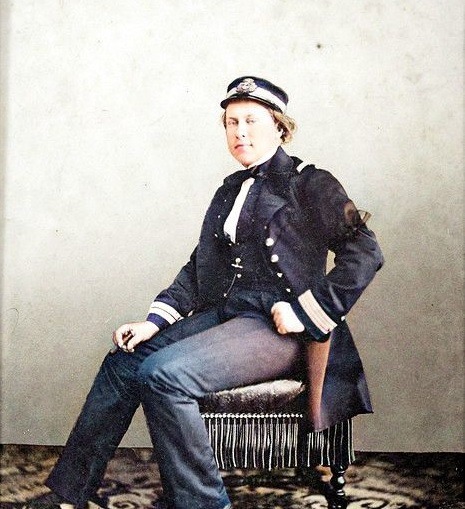
in the journey. Pedro V wrote the following regarding the wedding: "the wedding of my sister to Prince George of Saxony was celebrated with more pomp than happiness. The former is followed by a regretful fate, as he left no sympathies and people who met him often left with a poor impression."
The marriage was not a happy one, according to Historian Eduardo Nobre who claims that the Prince "did not live up to the expectations and qualities of the Portuguese Infanta". Despite their issues, they had eight children.
Although she renounced her claims to the Portuguese throne when she married, Maria Ana could still become Queen if the male line became extinct. This situation nearly happened in 1861, when King Pedro V and two of her other brothers died from Typhoid Fever and left no children. However, this hypothesis was completely put aside when her brother, King Luís I, married Princess Maria Pia of Savoy
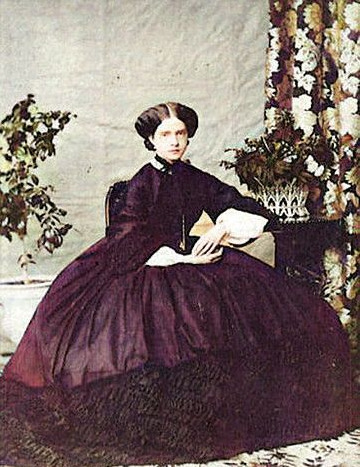
and had two sons, the future King Carlos I
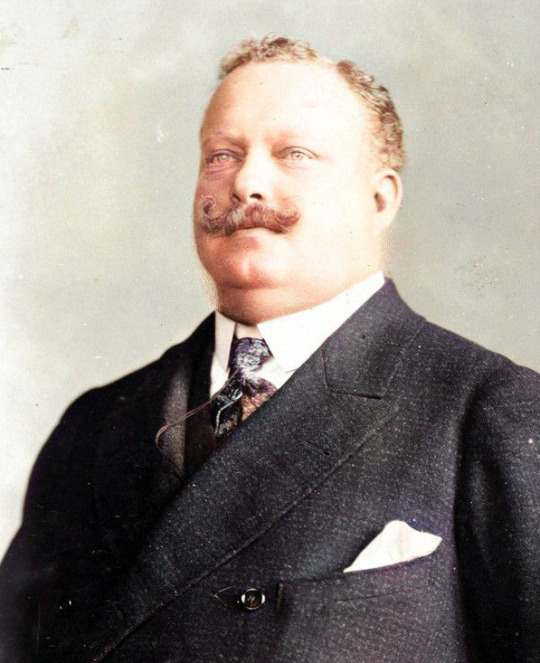
and Infante Afonso.
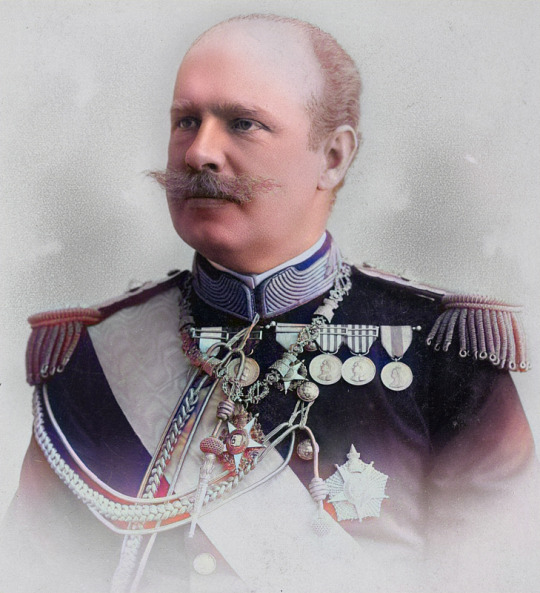
Despite everything, it's not likely that Maria Ana ever gave this hypothesis great importance because of her troubled marriage and many children.
Around 1883, her youngest son, Prince Albert of Saxony,

became seriously ill. Maria Ana took care of him for several months until he recovered. This effort would be fatal, as the Infanta died from exhaustion, on 5th February 1884, before her husband became King. Her husband would remain unmarried for the rest of his life.
In Portugal, her second brother Luís I soon succeeded her eldest brother Peter V as king.
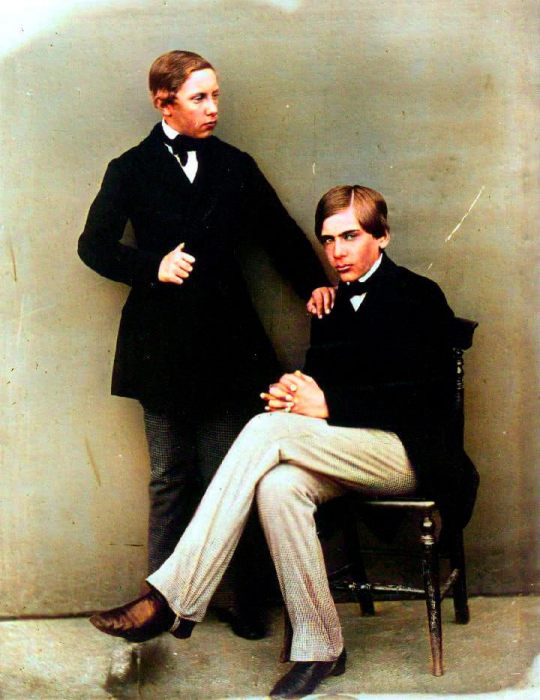
Her husband's elder brother Albert
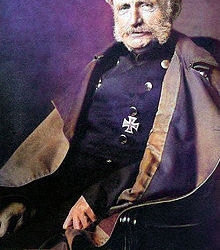
succeeded her father-in-law as King of Saxony and gradually it became clear that he and his wife Carola of Vasa
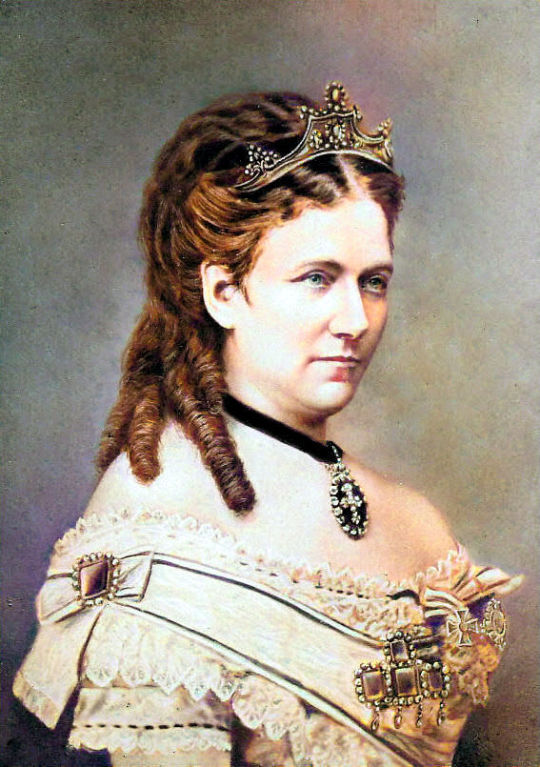
were not able to have children of their own. Maria Ana's eldest son would almost certain to one day succeed to the throne.
Marie Johanna Amalie Ferdinande Antonie Luise Juliane, (19th June 1860 - 2nd March 1861), died in childhood, no issue
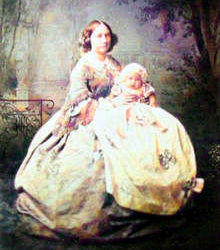
Elisabeth Albertine Karoline Sidonie Ferdinande Leopoldine Antonie Auguste Clementine (14th February 1862 - 18th May 1863) died in childhood, no issue
Mathilde Marie Auguste Viktorie Leopoldine Karoline Luise Franziska Josepha (19th March 1863 - 27th March 1933) died unmarried, no issue
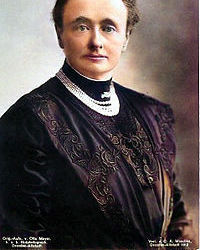
Frederick Augustus Johann Ludwig Karl Gustav Gregor Philipp (25th May 1865 - 18th February 1932)
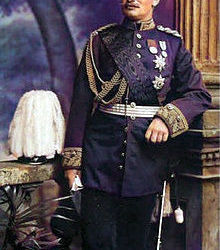
married Princess Louise of Tuscany (1870–1947),
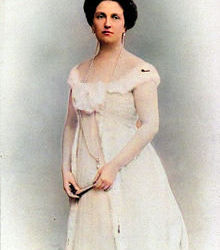
later divorced, had issue
Maria Josepha Luise Philippine Elisabeth Pia Angelica Margarethe (31st May 1867 - 28th May 1944)

married to her cousin second degrees Archduke Otto Franz of Austria (1865–1906),
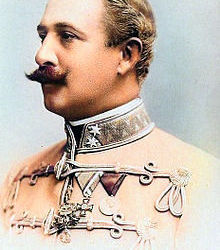
had issue
Johann Georg Pius Karl Leopold Maria Januarius Anacletus (10th July 1869 - 24th November 1938) married first Duchess Maria Isabella of Württemberg (1871–1904) and second Princess Maria Immaculata of Bourbon-Two Sicilies (1874–1906)

Maximilian Wilhelm August Albert Karl Gregor Odo (17th November 1870 - 12th January 1951) ordained as a priest, died unmarried, no issue
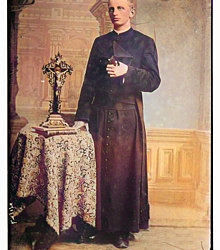
Albert Karl Anton Ludwig Wilhelm Viktor (25th February 1875 - 16 September 1900) died unmarried, no issue.

Princess Maria Ana predeceased her father Fernando, her husband George, and her brother-in-law King Albert of Saxony. In 1902 George succeeded his childless brother as king, and on his death in 1904 Maria Ana's eldest son became King of Saxony as Frederick Augustus III.
#infanta maria ana de bragança#house of bragança#queen maria ii of portugal#king consort fernando ii#king pedro v of portugal
13 notes
·
View notes
Photo

“Sophie Marceau could have been a long-lost Luxembourg sister (daughters of Infanta Maria Ana of Portugal and William IV).” - Submitted by Anonymous
14 notes
·
View notes
Text
Queen Maria II of Portugal’s Sapphire Tiara to Be Auctioned
Queen Maria II of Portugal’s Sapphire Tiara will be sold at Christie’s Magnificent Jewels auction on May 12th in Geneva. The tiara is made up of nine detachable elements featuring 1415 diamonds and five sapphires. The estimate is 170,000-350,000 CHF/ 180,379-371,238 USD.

The tiara was inherited by her daughter, Infanta Maria Ana, Princess of Saxony, in 1853 and was passed down through the Saxon and Hohenzollen-Sigmaringen families. Princess Birgitta of Sweden, Princess of Hohenzollern, wore it for the last time to Queen Margrethe II of Denmark’s wedding in 1967.

Spanish Royal Jewels has a great post about the tiara with more information here. I’m hoping it somehow ends up in the new Royal Treasury Museum at Ajuda Palace in Lisbon which is set to open in June of this year.
#tiara auction#Queen Maria#Portugal#Portuguese Royal Family#tiara#sapphire#Princess Margarete#Princess Birgitta#Hohenzollern#Germany#German Royalty#Tiara Talk#Sweden#Queen Maria II#Swedish Royal Family#tiaras#diadem#diadems#royal tiaras#jewels#royal jewels#royal#royals#royalty#jewellery#jewelry#crown#crowns#crown jewels
130 notes
·
View notes
Photo





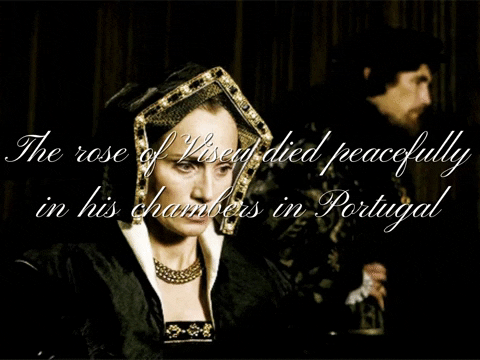
Mejores destinos para los Hijos de los Reyes Católicos- María de Aragón
María fue la hija mas desconocida de los Reyes Católicos siendo considerada bonita, pero no tanto como sus hermanas. La infanta era piadosa, caritativa y prudente ante todos los conflictos que estuvieron ocurriendo en la familia Trastamara.
En un principió se pensó en comprometerla con el rey James IV de Escocia, pero las negociaciones matrimoniales no llegaron a mucho y el rey se acabaría casando con la princesa Margarita Tudor. Tras su compromiso fallido, su hermana mayor la reina de Portugal Isabella de Aragón negocio un matrimonio para María con el duque de Viseu y Beja, Manuel de Avís que era hermano de la reina viuda Leonor de Viseu.
Manuel de Viseu no estaba muy convencido por aquella unión debido a que el tenia sentimientos escondidos por la reina Isabella, pero accedió a casarse con la infanta para asegurar la sucesión de sus ducados. Las negociaciones matrimoniales apenas duraron un año al ser Isabella de Aragon la mediadora de aquel compromiso y María partió hacia Portugal en 1500 llegando hasta la ciudad de Alcácer do Sal donde se celebro la boda.
Manuel y María se enamoraron a primera vista durante la ceremonia. Manuel llego a considerar a su esposa como “una flor hermosa, delicada y pequeña” e incluso llego a agradecer por carta a la reina Isabella de Aragón por haber formado aquella alianza ya que de esa forma conoció a su gran amor. María fue nombrada Duquesa consorte de Viseu y Beja tras casarse con Manuel. La pareja viajo al ducado de Viseu donde fueron bien recibidos nada mas entrar y María fue aclamada por todo el mundo.
Los reyes de Portugal les otorgaron como regalo de bodas los títulos de duques de Trancoso, Guimarães y una parte del ducado de Guarda, siendo los primeros Duques del ducado Guarda-Viseu.
En el ducado se celebraron sencillos, pero bellos bailes en honor a la nueva duquesa y también se llevo a cabo un torneo de justas donde participo Manuel. Se dice que el duque paro su montura ante su esposa y le dio una rosa roja como símbolo de su gran amor y pasión, lo que provoco que María fuera llamada por los nobles y el pueblo como “La rosa de Viseu”.
María se quedo embarazada casi dos años después de casarse con su marido y alumbro en 1502 a su primer hijo, Juan que sería Duque de Viseu. Pese a que al principio se creía que la duquesa tenia problemas de fertilidad, ella acabaría dándole a su marido 10 hijos seguidos:
Juan de Viseu (1502-1554) Fue duque de Viseu y miembro del consejo del rey Juan III de Portugal. El duque se caso con su prima, Catalina de Austria y tuvieron 4 hijos: Manuel, Felipe, María Manuela y Juan Manuel.
Isabella de Portugal (1503-1547) Fue Emperatriz consorte del Sacro Imperio Romano Germánico al casarse con su primo, Charles V y al sirvió como su regente al lado de su tía-suegra, Joanna. Isabella y Charles tuvieron 5 hijos: Philip I, Maria, Ferdinand, Joanna y John.
Beatriz de Portugal (1504-1538) Fue Duquesa consorte de Saboya al casarse con Carlos III de Saboya y tuvieron 3 hijos vivos: Manuel Filiberto I, Catalina y Isabella. Beatriz fue el tercer vástago en morir antes que su madre.
Luis de Beja (1506-1555) Fue Duque de Beja como herencia paternal. Luis tuvo distintos enfrentamientos con su hermano mayor debido a su supuesto casamiento morganático con una judía. Pese a esto Luis se casaría con su prima, Dulce de Portugal y esta le daría 5 hijos: Luisa, Ana, Luis, Alonzo y Dulce.
Fernando de Guarda (1507-1545) Fue Duque de Guarda-Viseu al dividirse una parte de estos territorios. Se caso con Guiomar Coutinho y tuvieron dos hijos: Luisa y Fernando de Guarda.
Alfonso de Portugal (1509-1548) Fue sucesivamente obispo de Guarda, cardenal, obispo de Viseu, obispo de Évora y finalmente arzobispo de Lisboa. Al morir inesperadamente en 1548 sus títulos fueron heredados a su sobrino, Don Teobaldo de Portugal que fue su estudiante.
María de Portugal (1511-1513) Falleció a los casi 2 años de edad, siendo su muerte una gran tristeza para su madre.
Enrique de Trancoso (1512-1580) Fue duque de Trancoso y miembro importante del consejo del rey Juan III. Enrique no se caso hasta el 1554 con la noble sueca, Catalina Stenbock con la cual tuvo 3 hijos: Enrique, Birgitta y Gustavo.
Eduardo de Guimarães (1515-1549) Fue duque de Guimarães. Se caso con Isabella de Braganza y tuvieron 3 hijos: María, Catalina y Eduardo de Guimarães.
Antonio (1516) Falleció poco después de nacer.
Tras el nacimiento de su hijo Antonio y el fallecimiento de este, María se negó a traer mas hijos al mundo y verlos morir antes que ella. Esto fue aceptado por Manuel que se mantuvo fiel a su esposa pese a no volver a compartir el lecho. María fue una madre dedicada y amorosa dejando una gran huella en sus hijos que siempre guardaron buenos recuerdos de su progenitora.
La duquesa no se entrometió en la política portuguesa, aun que llego a recibir a los distintos embajadores extranjeros que visitaban el ducado y se dice que María dejaba una buena impresión, además de tener un perfecto portugués a la hora de entablar conversaciones con los visitantes. También fue una mujer muy piadosa y ayudo a diferentes conventos, organizaciones religiosas y monasterios a fundar sus propias escuelas o edificios santos.
María sufrió mucho con las muertes de algunos de sus hijos que fallecieron antes que ella y su marido. Su hija Beatriz falleció debido a la tuberculosis en 1538 y María guardo luto por su hija por año, además de permanecer unos meses en la corte saboyana junto a sus nietos, hijos de Beatriz. Otro de sus hijos fue Fernando que falleció tras varios días de padecer viruela en 1545.
María llevo estas muertes como pudo, pero en el año 1547 falleció su hija mayor, Isabella tras un cáncer de mama y dos meses después su marido murió debido a una arritmia cardiaca. Estas muertes fueron un gran dolor para María que se refugió en la religión al igual que sus hermanos. También solía visitar el Sacro Imperio para ver a sus nietos los archiduques y visito a su hermana mayor, Juana en su residencia de Tordesillas y ambas se consolaban ante las perdidas que iban pasando cada una.
Su hijo Alfonso fallecería inesperadamente en 1548 y María se mantuvo al lado de su hijo que falleció en sus brazos. La muerte de su hijo la marco de por vida y se resguardo aun mas en la religión, llegando a usar prendas mas aptas de una monja en vez de una duquesa o viuda.
María empezó a sufrir graves problemas de corazón a inicios del 1549 y permaneció en cama por varios meses hasta que falleció unos días antes de cumplir los 67 años de edad en Portugal. Su muerte fue muy sentida por los nobles leales al ducado de Viseu y Beja, pero también fue bastante dolorosa para sus hijos que siempre mantendrían un especial recuerdo de ella.
~~~~~~~~~~~~~~~~~~~~~~~~~~~~~~~~~~~~~~~~~~~~~~~~~~~~~~~
Best destinations for the Children of the Catholic Monarchs- María of Aragón
María was the most unknown daughter of the Catholic Monarchs, being considered pretty, but not as pretty as her sisters. The infanta was pious, charitable and prudent in the face of all the conflicts that were occurring in the Trastamara family.
At first, it was thought of committing her to King James IV of Scotland, but the marriage negotiations did not go to much and the king would end up marrying Princess Margaret Tudor. After her failed engagement, her older sister, the Queen of Portugal Isabella of Aragón, negotiated a marriage for María with the Duke of Viseu and Beja, Manuel of Avís, who was the brother of the widowed queen Leonor of Viseu.
Manuel of Viseu was not very convinced by that union because he had hidden feelings for Queen Isabella, but he agreed to marry the infanta to ensure the succession of her duchies. The marriage negotiations barely lasted a year as Isabella of Aragon was the mediator of that engagement and Maria left for Portugal in 1500 reaching the city of Alcácer do Sal where the wedding took place. Manuel and María fell in love at first sight during the ceremony. Manuel came to consider her wife as "a beautiful, delicate and small flower" and even came to thank Queen Isabella of Aragon by letter for having formed that alliance since in that way he met her great love. María was named Duchess consort of Viseu and Beja after marrying Manuel. The couple traveled to the Duchy of Viseu where they were well received as soon as they entered and Maria was acclaimed by the whole world.
In the duchy, simple but beautiful dances were held in honor of the new duchess and a jousting tournament was also held where Manuel participated. It is said that the duke stopped her mount before her wife and gave her a red rose as a symbol of her great love and passion, which caused Mary to be called by the nobles and the people as "The rose of Viseu ”.
María became pregnant almost two years after marrying her husband and gave birth to her first child, Juan, who would be Duke of Viseu in 1502. Although at first it was believed that the duchess had fertility problems, she would end up giving her husband 10 children in a row:
John de Viseu (1502-1554) He was Duke of Viseu and a member of the council of King Juan III of Portugal. The duke married his cousin, Catherine of Austria and they had 4 children: Manuel, Felipe, María Manuela and Juan Manuel.
Isabella of Portugal (1503-1547) She was Empress consort of the Holy Roman Empire by marrying her cousin, Charles V and serving as her regent alongside her aunt-mother-in-law, Joanna. Isabella and Charles had 5 children: Philip I, Maria, Ferdinand, Joanna and John.
Beatrice of Portugal (1504-1538) She was Duchess consort of Savoy when she married Carlos III of Savoy and they had 3 living children: Emmanuel Philibert I, Catherine and Isabella. Beatriz was the third child to die before her mother.
Louis of Beja (1506-1555) He was Duke of Beja as a paternal inheritance. Luis had different confrontations with his older brother due to his supposed morganatic marriage to a Jewess. Despite this, Luis would marry his cousin, Dulce de Portugal and she would give him 5 children: Louise, Anna, Louis, Alonzo and Dulce.
Ferdinando of Guarda (1507-1545) He was Duke of Guarda-Viseu when part of these territories were divided. He married Guiomar Coutinho and they had two children: Luisa and Fernando of Guarda.
Alfonso of Portugal (1509-1548) He was successively Bishop of Guarda, Cardinal, Bishop of Viseu, Bishop of Évora and finally Archbishop of Lisbon. When he died unexpectedly in 1548, his titles were inherited to his nephew, Don Teobaldo de Portugal, who was his student.
María of Portugal (1511-1513) she died when she was almost 2 years old, her death being a great sadness for her mother.
Henry of Trancoso (1512-1580) He was Duke of Trancoso and an important member of the council of King Juan III. Enrique did not marry until 1554 with the Swedish noblewoman, Catherine Stenbock with whom he had 3 children: Enrique, Birgitta and Teobaldo.
Duarte of Guimarães (1515-1549) He was Duke of Guimarães. He married Isabella de Braganza and they had 3 children: María, Catherine and Duarte of Guimarães.
Antonio (1516) died shortly after birth.
After the birth of her son Antonio and his death, María refused to bring more children into the world and see them die before her. This was accepted by Manuel who remained faithful to his wife despite not sharing the bed again. María was a dedicated and loving mother leaving a great mark on her children who always kept good memories of her mother.
The Duchess did not interfere in Portuguese politics, although she did receive the various foreign ambassadors who visited the duchy and it is said that Maria left a good impression, in addition to having perfect Portuguese when it came to engaging in conversations with visitors. She was also a very pious woman and helped different convents, religious organizations and monasteries to found their own schools or holy buildings.
Maria suffered greatly with the deaths of some of her children who died before her and her husband. Her daughter Beatriz hers died due to tuberculosis in 1538 and María kept mourning for her daughter for years, in addition to staying a few months at the Savoyard court with her grandchildren, Beatriz's children. Another of her children was Fernando, who died after several days of suffering from smallpox in 1545.
María carried these deaths as she could, but in the year 1547 her eldest daughter Isabella died after breast cancer and two months later her husband died due to a cardiac arrhythmia. These deaths were a great pain for Mary that she took refuge in religion like her brothers. She also used to visit the Holy Empire to see her grandchildren, her archdukes, and she visited her older sister, Juana, at her residence in Tordesillas and they both consoled themselves for the losses that each one was going through.
Her son Alfonso hers would die unexpectedly in 1548 and María remained by the side of her son who died in her arms. The death of her son marked her for life and she sheltered herself even more in religion, coming to wear more suitable garments of a nun instead of a duchess or widow.
María herself began to suffer serious heart problems in early 1549 and she remained in bed for several months until she passed away a few days before reaching 67 years of age in Portugal. Her death was deeply felt by the nobles loyal to the Duchy of Viseu and Beja, but it was also quite painful for her children who would always keep a special memory of her.
#maria of aragon#manuel of portugal#john of portugal#isabella of portugal#beatrice of portugal#henry of portugal
19 notes
·
View notes
Text
BENEDITA OF PORTUGAL
Princess of Brazil
(born 1746 - died 1829)

pictured above is a portrait of the Infanta of Portugal, painted by Miguel António of Amaral in 1773
-------------------- ~ -------------------- ~ --------------------
MARIA FRANCISCA BENEDITA ANA ISABEL ANTÓNIA LOURENÇA INÁCIA TERESA GERTRUDES RITA ROSA was born in 1746, in Lisbon, the capital of the Kingdom of Portugal, which was ruled by her grandfather João V, King of Portugal.
She was the youngest daughter of José, Prince of Brazil, and Infanta Mariana Victoria of Spain, and, thus, was a member of the HOUSE OF BRAGANZA.
Even though her father was the heir to the Portuguese throne, at birth, she was not entitled to or given any title. She was simply known by her family name, as MARIA BENEDITA OF BRAGANZA AND BOURBON, following the Iberian tradition of combining the family names of the parents as a compound surname.
Also, following a tradition of the House of Braganza, she and her sisters were baptized with a bunch of given names, having the names Maria and Francisca in common. While she was named Benedita in honour of Pope Benedictus XIV.
When her grandfather died in 1750, her father succeeded as José I, King of Portugal and the Algarves. And she, aged four, became an INFANTA OF PORTUGAL.
Lisbon suffered a terrible earthquake in 1755, which destroyed almost the entire city, including the Ribeira Palace. The Royal Family was displaced and lived in tents for decades because her father became terrified of living in a confined room.
As her father only had surviving daughters, in order to keep the throne in the family, in 1760, her eldest sister Maria Francisca, 7th Princess of Brazil, was married to their paternal uncle. While her middle sisters remained single after failed negotiations to marry French Princes.
Concerning her marriage, although other names were suggested, around 1175, she was promised to her much younger nephew JOSÉ FRANCISCO, 2nd PRINCE OF BEIRA. He was the eldest son of her uncle, Infante Pedro of Portugal, and her sister, the Princess of Brazil.
At the time of her proxy wedding in February 1777, she was 30 years old, and her bethroted was 15. Besides being the Prince of Beira, as the eldest child of the Princess of Brazil, her husband was also the second-in-line to the Portuguese throne and the Duke of Barcelos. So, following the proxy marriage, she officially became the PRINCESS CONSORT OF BEIRA and the DUCHESS OF BARCELOS.
A few days after her wedding, her father died, being succeeded by her sister. By April 1777, her religious wedding was held. And, in May 1777, her sister was acclaimed as Maria, Queen of Portugal.
Following the acclamation, her husband was finally recognized as the heir apparent to the throne, becoming known as José, 8th Prince of Brazil. And, also receiving the subsidiary titles of 14th Duke of Braganza, 13th Marquis of Vila Viçosa, 18th Count of Ourém, 15th Count of Arraiolos, and 15th Count of Neiva.
So she became known by the titles of her husband as PRINCESS CONSORT OF BRAZIL, DUCHESS OF BRAGANZA, MARQUISE OF VILA VIÇOSA, COUNTESS OF OURÉM, COUNTESS OF ARRAIOLOS, and COUNTESS OF NEIVA.
By 1781, when her mother died, she was 34 years old.
Unfortunately, after eleven years of marriage, her husband died in 1788, and she became a widow at 41 years old.
Even though she was entitled to use the title of DOWAGER PRINCESS OF BRAZIL, she probably did not use it to not clash with the new Princess. Instead, she was known by her title of Infanta of Portugal until her death.
Because she had not given birth to any child, the title passed to the new heir apparent, her other nephew and former brother-in-law, Infante João of Portugal, who became the 9th Prince of Brazil. And, the wife of her nephew, Infanta Carlota Joaquina of Spain, became the new Princess Consort of Brazil.

pictured above is a portrait of the Dowager Princess of Brazil with her family (on the bottom right, from left to right, the new Prince of Brazil, the Queen of Portugal, the new Princess of Brazil, Infanta Maria Ana, herself, and Infante Pedro Carlos), painted as the main mural of the Royal Chapel of the Bemposta Palace in 1793
Since the mental health of the Queen had been deteriorating for years, in the early 1790s, it was declared that her sister was unable to rule. So from 1792, her nephew took the unnoficial role of regent until he finally agreed to become the Prince Regent of Portugal in 1799.
Europe, at that time, was facing the French Revolutionary Wars that culminated in Napoléon Bonaparte, proclaiming himself as Emperor of the French in 1804.
Emperor Napoléon I intended to conquer Portugal in 1807, so her nephew and his counselors decided to flee the country and move the court to the Colony Estate of Brazil to avoid a possible deposition.
Then, at the end of 1807, all members of the Portuguese Royal Family, including herself, fled to Brazil, arriving in 1808.
While living in Brazil, the mental health of another of her sisters, Infanta Maria Ana of Portugal, also deteriorated, and she took care of her.
In 1815, her nephew decided to emancipate the colony of Brazil to Kingdom. Her sister became the first Queen of the United Kingdom of Portugal, Brazil and the Algarves, but unfortunately died a couple of months later.
If her husband was still alive, following the death of her sister, she could have become Queen Consort of Portugal, Brazil and the Algarves in 1816. But, instead, her nephew succeeded as King João VI.
It was only in 1821 that she and the remaining members of her family returned to Portugal, under pressure from the Portuguese nobility.
The Dowager Princess of Brazil died in 1829, at the age of 83, in her hometown. She had never remarried.
-------------------- ~ -------------------- ~ --------------------
COLLECTION: On this day, July edition - #otdJuly
Maria Benedita of Braganza was born on 25 July 1746.
#benedita of braganza#infanta of portugal#princess of brazil#braganza#portuguese royals#portuguese royal family#monarchy#monarchies#royals#royalty#royal history#portuguese history#brazilian history#history#history lover#history with laura#napoleonic era#18th century#19th century#otd july
13 notes
·
View notes
Text

Infanta Antónia of Portugal (Antónia María Fernanda Micaela Gabriela Rafaela Francisca de Assis Ana Gonzaga Silvéria Júlia Augusta de Saxe-Coburgo e Bragança) was a Portuguese infanta (princess) of the House of Bragança, daughter of Queen Maria II of Portugal and her King consort Fernando II of Portugal. Through her father, she also held the titles of Princess of Saxe-Coburg and Gotha and Duchess of Saxony. Mother of the king of Romania.
21 notes
·
View notes
Photo

People that have marred in to Royal Families since 1800
Luxembourg
Infanta Marie Anne of Portugal 13 July 1861 – 31 July 1942
Infanta Marie was Grand Duchess of Luxembourg as the wife of Grand Duke Guillaume IV and the country's regent in the name of their daughter, Grand Duchess Marie-Adélaïde. She was a member of the House of Braganza.
Born at Schloss Bronnbach in Bronnbach, Wertheim am Main, Kingdom of Württemberg, Infanta Marie Anne (or Maria Ana) was the fifth child and second-youngest daughter of the deposed King Miguel of Portugal and his wife Princess Adelaide of Löwenstein-Wertheim-Rosenberg. As such, she was titled and styled from birth as an infanta of Portugal. At the time of her birth, her father had been exiled, and the family lived as guests in the Austro-Hungarian Empire. In spite of their straitened circumstances, the daughters of Miguel I made good marriages, some to reigning monarchs and deposed heads of Roman Catholic European dynasties.
Before her marriage with William IV, Grand Duke of Luxembourg, she was considered by Emperor Franz Joseph I of Austria as a suitable bride to his only son and heir, Rudolf, but Rudolf did not like her and she would remain single for the next years.
Infanta Maria Ana was married on 21 June 1893 at Schloss Fischhorn, Zell am See, to the Protestant Wilhelm, Hereditary Grand Duke of Luxembourg, the son and heir apparent of Adolf, Grand Duke of Luxembourg, head of the House of Nassau. It was agreed that the children would be raised in their mother's Catholic faith, the religion of the overwhelming majority of Luxembourg's population.
The couple had six daughters.
Wilhelm IV became Grand Duke on the death of his father on 17 November 1905, and Marie Anne became Grand Duchess. Because Wilhelm was the last agnate of the House of Nassau, he had Marie-Adelaide confirmed and proclaimed heir presumptive on 10 July 1907. Upon her father's death, she became the first reigning Grand Duchess of Luxembourg.
Following her abdication on 14 January 1919, her sister Charlotte succeeded her on the throne.
Grand Duchess Marie Anne was regent for her husband during his terminal illness from 19 November 1908 to 15 February 1912, and then regent for her daughter, Grand Duchess Marie-Adélaïde, during her minority from 25 February 1912 to 18 June 1912.
Dowager Grand Duchess Marie Anne died in exile in New York on 31 July 1942, the family having fled Germany because of World War II.
8 notes
·
View notes
Photo

Maria da Assunção of Portugal (25 June 1805 - 7 January 1834)
#maria da assunção of portugal#maria da assunção ana joana josefa luísa gonzaga francisca de assis xavier de paula joaquina antónia de s. tiago#infanta of portugal#daughter of john vi of portugal#history#women in history#19th century#art
0 notes
Photo

#Infanta Maria Ana of Portugal#Princess Maria Ana of Saxony#Portuguese royal family#1860s#saxon royal family#victorian
6 notes
·
View notes
Photo

Infanta Ana de Jesus Maria of Portugal
She was the youngest child of João VI and Carlota Joaquina of Spain. Ana’s marriage to a nobleman was considered a terrible scandal at the time, since she was the first Portugese Infanta since the Middle Ages who hadn’t married a man of Royal Rank. The likely reason for the marriage would have been obvious, since she gave birth to their first child just 22 days after the wedding.
#Infanta Ana de Jesus Maria#portugal#portugese royal family#Ana de Jesus Maria of Portugal#infanta#long live the queue
34 notes
·
View notes